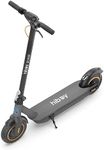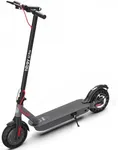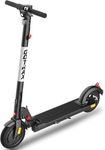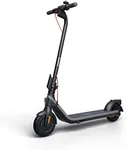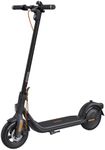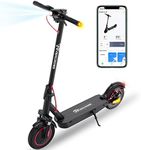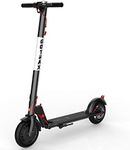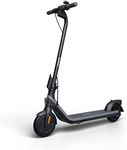Buying Guide for the Best E Scooters
Choosing the right e-scooter can make your daily commute or leisure rides much more enjoyable and convenient. It's important to think about how and where you'll use the scooter—whether it's for short trips around the neighborhood, commuting to work, or longer weekend rides. Understanding the main features and how they relate to your needs will help you make a smart choice that fits your lifestyle.RangeRange refers to how far the e-scooter can travel on a single charge. This is important because it determines how much you can use the scooter before needing to recharge. E-scooters typically offer ranges from about 10 km (good for short, occasional trips) up to 40 km or more (better for longer commutes or frequent use). To pick the right range, think about your typical travel distance and add a little extra to account for unexpected detours or errands.
Top SpeedTop speed is the maximum speed the e-scooter can reach. This matters for both safety and convenience. Lower speeds (up to 20 km/h) are usually enough for crowded city areas or younger riders, while higher speeds (up to 30 km/h or more) might be preferred for open roads or experienced users. Consider your local regulations and your comfort level when choosing the right top speed for you.
Weight and PortabilityThe weight of the e-scooter affects how easy it is to carry, especially if you need to take it on public transport or up stairs. Lightweight models (under 12 kg) are easier to handle but may have fewer features, while heavier models (over 15 kg) might offer more power or range but are harder to carry. Think about how often you'll need to lift or fold your scooter and choose a weight that matches your routine.
Motor PowerMotor power, measured in watts, influences how well the scooter handles hills and how quickly it accelerates. Lower power (around 250W) is fine for flat city streets, while higher power (350W or more) is better for hilly areas or heavier riders. Consider the terrain you'll be riding on and your own weight to decide how much power you need.
Tire Type and SizeTires can be solid or pneumatic (air-filled), and their size affects ride comfort and stability. Solid tires are puncture-proof but can feel bumpier, while pneumatic tires offer a smoother ride but may need more maintenance. Smaller tires (under 8 inches) are more compact but less comfortable on rough surfaces, while larger tires (10 inches or more) handle bumps better. Choose based on the road conditions you'll face most often.
Braking SystemThe braking system is crucial for safety. E-scooters may have electronic, disc, drum, or foot brakes. Electronic and foot brakes are simple but less powerful, while disc and drum brakes provide stronger, more reliable stopping power. If you'll be riding in busy areas or at higher speeds, prioritize a scooter with a strong braking system.
SuspensionSuspension helps absorb shocks from bumps and rough roads, making your ride smoother. Some e-scooters have no suspension, which is fine for smooth city streets, while others have front, rear, or dual suspension for better comfort on uneven surfaces. If you expect to ride on rough or mixed terrain, look for a model with good suspension.
Water ResistanceWater resistance indicates how well the scooter can handle wet conditions. Some e-scooters are only splash-proof, while others can handle light rain. If you plan to ride in all weather, check for a higher water resistance rating to protect the scooter’s electronics and ensure safe operation.
